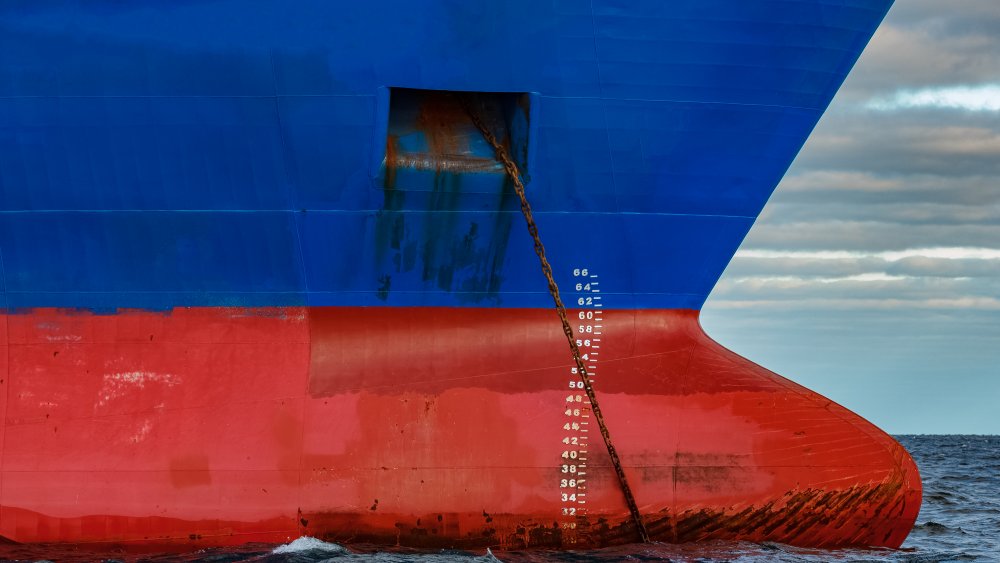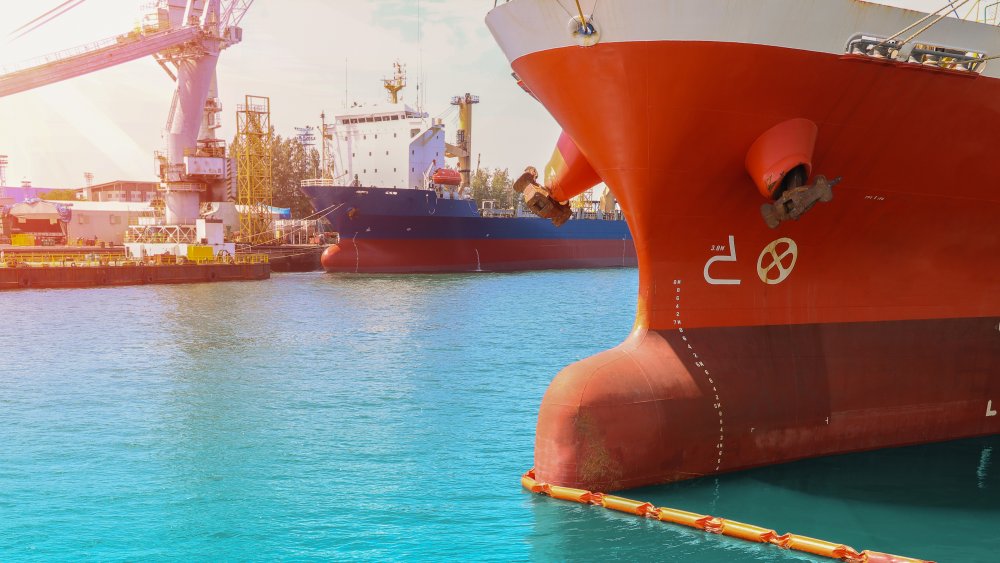The Real Reason Most Ships Are Painted Red On The Bottom
There are some crazy, hardy creatures living in the ocean... things that can survive in hydrothermal vents, or hideous ghouls that thrive at depths that would crush your body like a can of Budweiser.
If you've ever seen whales or sharks up close, you may have noticed that much of the time they've got other things living on them, as if they were biological tenement housing.
Usually the culprits are things like barnacles, marine worms and "biofilms" — stuff like algae that multiplies as microscopic bacteria builds up on whatever happens to be floating around. According to the Woods Hole Oceanographic Institute (WHOI), this process is known as "biofouling", and it's a big deal for boats, too.
Ever since we've been putting things in water, they've been getting all biofouled, and for millennia, we've been struggling to deal. Over the ages, humans have tried everything from scraping chains against the hull, coating hulls with glass, even electrifying the water around vessels.
Fat bottomed ships, you make the rockin' world go round
Biofouling is serious business, because it increases drag on the underside of vessels. WHOI notes a study estimating that "biofouling increases the frictional drag on ships so much that it costs the U.S. Navy between $180 and $260 million per year in added fuel use." Smithsonian adds that it can end up transporting harmful, invasive species across large spans of territory, potentially wreaking havoc on the environment.
Factor in the costs of docking a ship for cleaning and lost revenue, and it becomes clear that this is a very expensive issue — so much that it's got sailors seeing red.
Biofouling protection started with ancient Romans, who realized that lead sheeting on the bottom of their boats helped reduce organic growth. Then, in the 1700s, the British improved upon this concept with copper sheeting, until boats started to be made with steel, which corroded more quickly when in contact with copper.
The next answer? Coats of paint with copper, which could be layered without affecting the integrity of the ship hull and was toxic to organisms which caused biofouling. As you might have guessed, this copper paint had a reddish-brown hue, like a penny, and things haven't changed much since.
Nowadays, Jalopnik says we can pretty much use any color of paint thanks to advances in technology, but you know sailors... they're traditional folk. Thus, red paint with copper reduced biofilm, making boats faster, and we've stuck with red-bottomed boats like a barnacle to its broadside.

